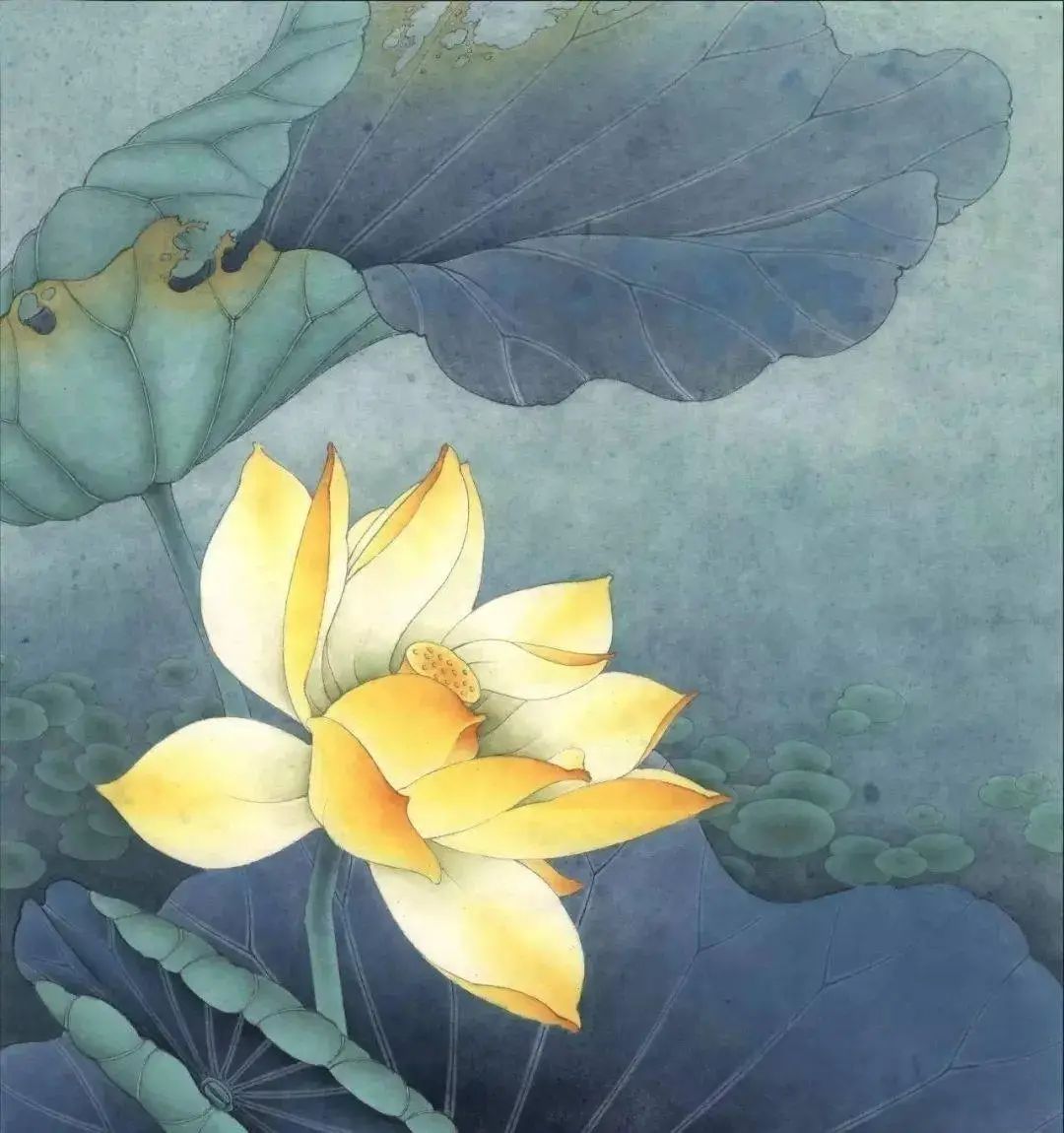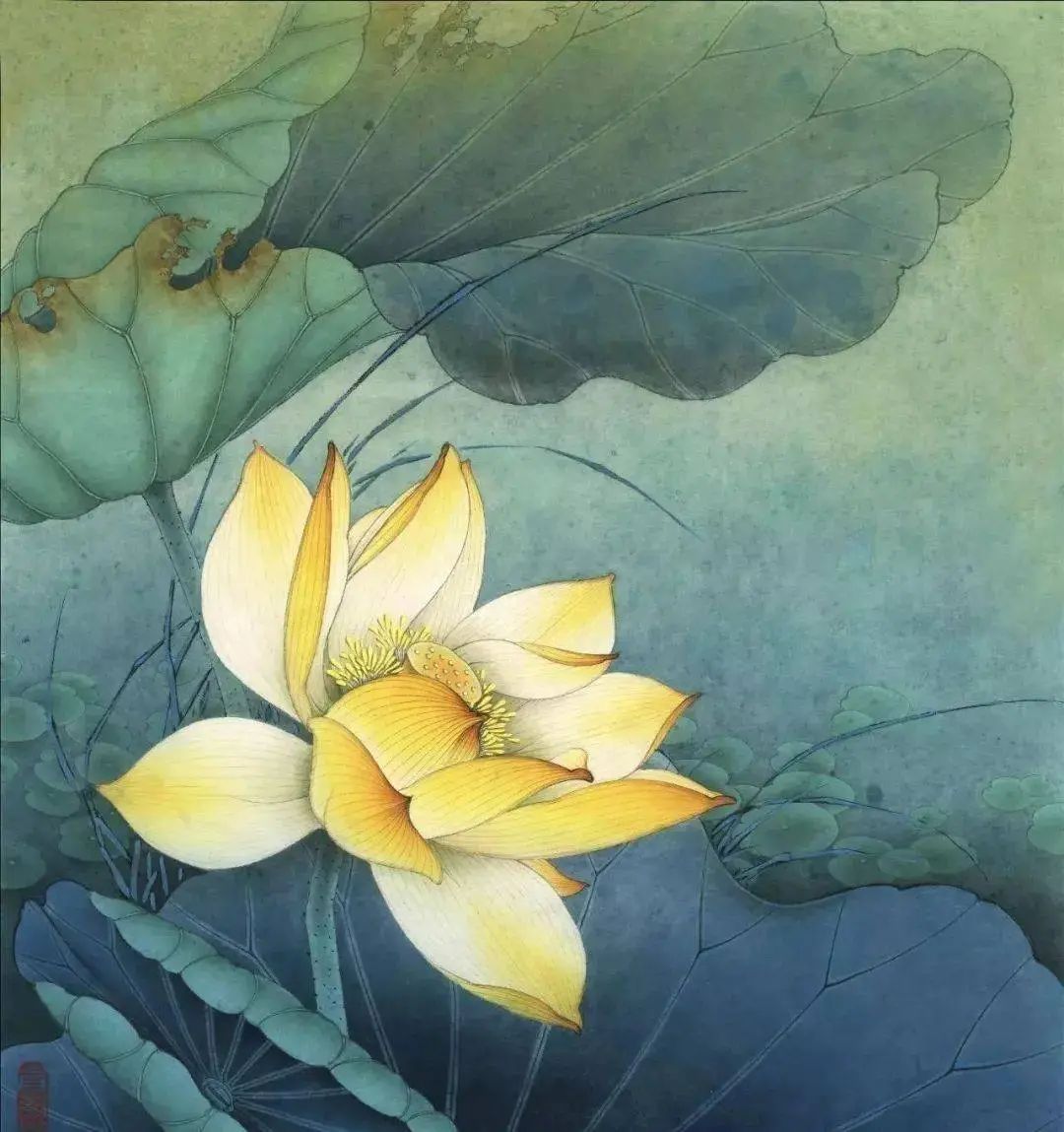Detailed painting steps of Five-colored lotus in Gongbi style!
golden lotus banana
1、Light ink outlines the flower head, thick ink outlines the main leaves, medium ink outlines the reverse leaves, branches, water plants, etc. This artwork mainly features color changes, with lines appropriately weakened. However, it is still necessary to pay attention to the subtle strokes and texture changes of the lines. The thread used for withered lotus pods should be dull and rough, while the thread used for distant views should be blurred. The fine leaf veins of the main leaves should be clearly and neatly drawn with a pen, while the lines used for red knotweed and water plants are close to traditional painting techniques.
2、Dip the primer pen in clean water and wet the cooked dough as a whole. Prepare rattan yellow, three green, light ink, phthalocyanine blue, and indigo in other color dishes in advance, and then mix in the colors according to the depicted object while it is wet. The color of lotus leaves ranges from yellow to green, then to phthalocyanine blue, and finally to dark green (the color of leaves tends to be yellow green closer to the bright upper right part). Use rattan yellow for the flower head, light ink for the lotus pod, triple green for the leaves of Polygonum multiflorum, and cover the water plants with green while they are wet. The direction of the incoming light is slightly brighter, mainly depicted in rattan and yellow, and then colored with a fountain pen to create a light strip.
3、The flower head is once again fully covered with rattan yellow (with shallow edges and deep center), and then the petals, roots, and lotus pods are dyed separately with clear ink. Water plants are dyed with light ink, leaving water lines in the main tendons. Lotus leaves are dyed with light ink, leaving water lines on both sides of the leaf veins. Dry lotus pods and red leaves are both dyed with light ink.

4、The head of the Polygonum hydropipes is wet dyed light pink, while the leaves of the Polygonum hydropipes are dyed with ink by adding a small amount of head green leaves and leaving water lines on both sides of the veins. The lotus flower head is dyed with a light crimson color (rouge+vermillion+a little ink) to enlarge the area, and the lotus pod is dyed with a triple green cover.
The withered lotus pods are further dyed with medium ink, and the structural changes of the lotus seeds, lotus pod surface, and withered lotus stems are meticulously carved. Lotus leaves are dyed with medium ink to separate fine leaf veins. The overall coverage of aquatic plants is light green with three shades.

5、The lotus flower head is dyed with pink yellow (rattan yellow+white) to brighten the surface, and then the tips of the petals are partially touched with light eosin. Afterwards, the flower veins are outlined with a fine pen of light magenta (rouge+vermilion+a little ink). Pink yellow spotted stamens, dense white powder spotted stamen tips, and hooked filaments.
Lotus pods are dyed in dark green (grass green+a little ink) and dotted with thick rouge at the tips. The entire dried lotus pod is covered with ochre, with thick bright areas and shallow dark areas. The lotus leaves in the dark areas are counterstained with blue (phthalocyanine blue+tricolor) from the edge mesh, and then overall counterstained with phthalocyanine blue. The edges of the lotus leaves in the bright areas are counterstained with rattan yellow or tricolor, and then overall counterstained with grass green. In the close-up, the main leaves of the aquatic plant are dyed with a head green color, while the opposite leaves are dyed with a four green color (three green+white).
The distant view is tinged with light dark green. Red knotweed is spot dyed with light eosin, the leaves are overall covered with light dark green, and the stems are flat coated with juice green and then flat coated with light triple green. The distant part above the screen, along with the entire object, is covered with a light three green color. The picture is completed by partially washing and adjusting the screen with a water pen.
